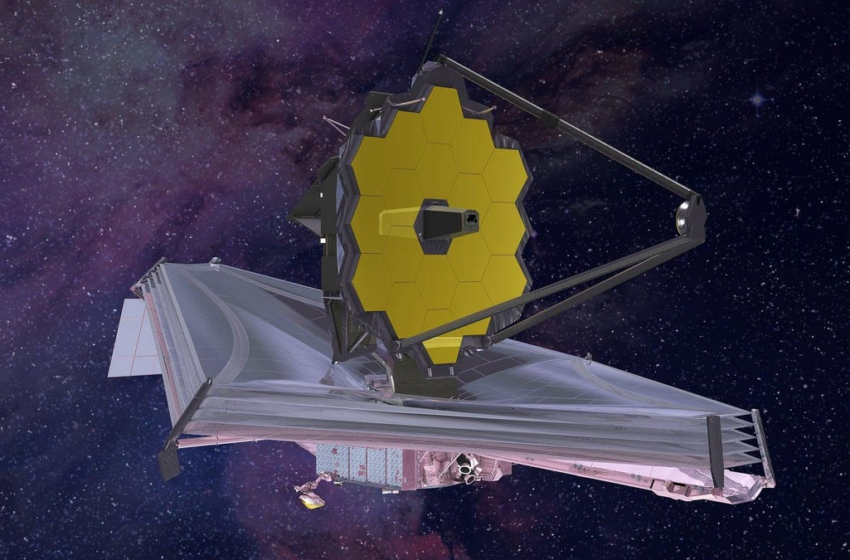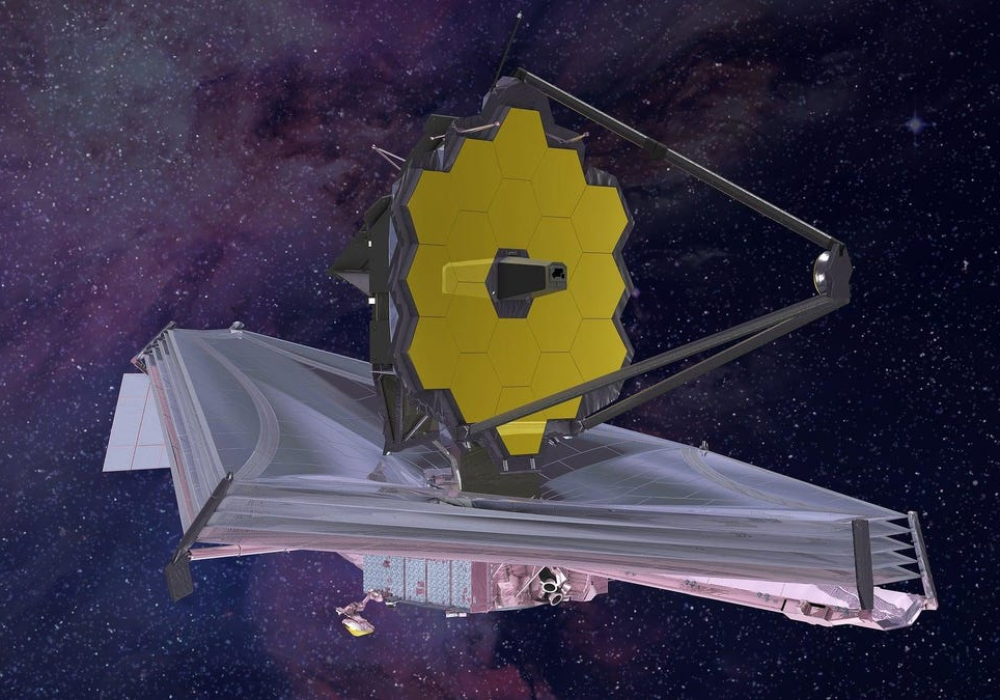
The left wing of Webb’s primary mirror unfolded and locked into position on Saturday, in what was the final step of the major deployments phase. The space telescope finally looks like a telescope, but the commissioning phase is far from over.
Ground controllers at the Space Telescope Science Institute in Baltimore declared the primary mirror complete at 1:17 p.m. EST on Saturday, January 8, having started with the left wing deployment some four hours earlier. The team moved the right wing into position on Friday. The primary mirror, at 21 feet (6.4 meters) wide, is now the largest mirror ever sent into space, with a collecting area more than six times that of Hubble’s mirror. The telescope had to be folded tight to make it fit inside the payload fairing of an Ariane 5 rocket, and assembling it in orbit was deemed unfeasible.
So with the primary mirror, as well as the secondary mirror, radiator, sunshield, and solar panel, securely in place, all major deployments have been wrapped up, and with no serious glitches or hurdles to speak of. Launched to space on Christmas Day, Webb is a joint effort involving NASA, the European Space Agency, and the Canadian Space Agency.
“The successful completion of all of the Webb Space Telescope’s deployments is historic,” Gregory Robinson, Webb program director at NASA, said in a press release. “This is the first time a NASA-led mission has ever attempted to complete a complex sequence to unfold an observatory in space—a remarkable feat for our team, NASA, and the world.”
I’m not one for hyperbole, but Robinson’s high praise is fully warranted. Webb is the most complicated and powerful space telescope ever sent into space, having as many as 344 potential points of failure—the vast majority of which have now been retired.
“The James Webb Space Telescope is an unprecedented mission that is on the precipice of seeing the light from the first galaxies and discovering the mysteries of our universe,” said NASA administrator Bill Nelson. “Each feat already achieved and future accomplishment is a testament to the thousands of innovators who poured their life’s passion into this mission.”
The primary mirror has been deployed, but it’s far from ready to go. All 18 of its hexagonal segments now need to be aligned, in a meticulous process that’s expected to take 10 days. The primary mirror is meant to function as a single concave mirror, requiring all 18 gold-plated segments to redirect incoming light to a single focal point, namely the secondary mirror positioned in front of the telescope. Mission controllers will align all mirrors into precise positions using 126 actuators.
In addition to this, they’ll need to perform a third course correction to steer the observatory to its workspace: the second Lagrange point. From this spot, located some 1 million miles (1.5 million kilometers) from Earth, Webb will use its infrared capabilities to study ancient galaxies, our solar system, and distant exoplanets. The third and final course correction is scheduled for Sunday, January 23.
It’ll be around this time that NASA will power-up Webb’s scientific instruments. Assuming that goes well, the remaining five months of commissioning will be about aligning the optics and calibrating the instruments. The science phase of the mission is expected to start this coming summer and last for some 20 years, according to new fuel estimates. Webb’s predecessor, the Hubble Space Telescope, is still operating today after more than 30 years in space—so there’s reason to be hopeful that Webb will outlive its initially planned lifespan of only five and a half years.
More: Webb Space Telescope Got a Lucky Boost From Its Christmas Launch.










